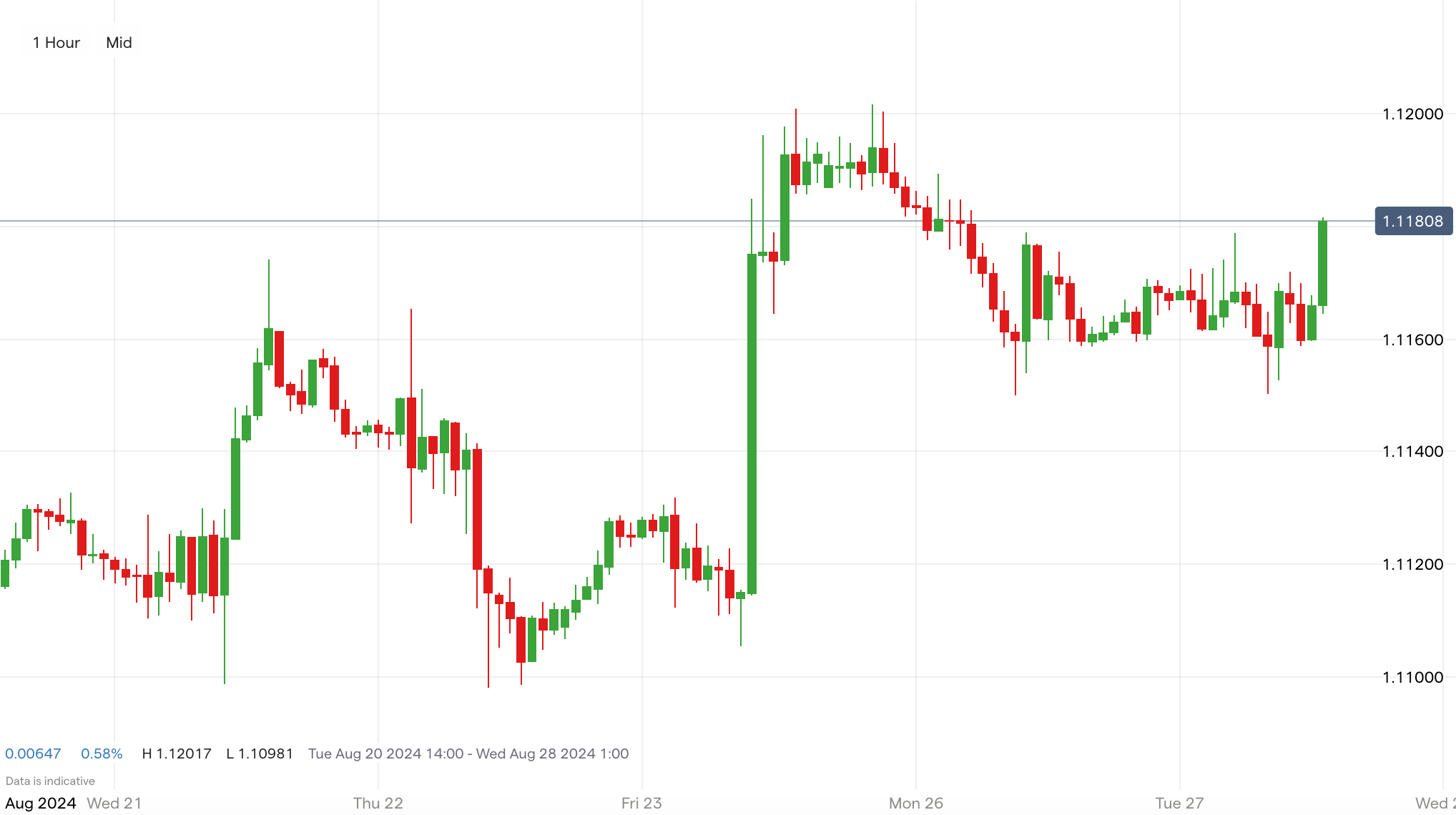EUR/USD pulls back from highs ahead of key inflation data
As the ECB meeting nears, the euro pulls back from 1.12 to 1.11; potential record low inflation in the Euro Area and speculation on US rate cuts add to the volatility, impacting EUR/USD trader strategies.

Key points
- EUR/USD retreats from August high of 1.12 to 1.11 ahead of ECB meeting on September 12th
- Potential record low inflation of 2.2% YoY in Germany and Euro Area for August
- Fed Chair Powell hints at possible rate cuts, impacting the US dollar's strength
- Upcoming ECB and Fed interest rate decisions could result in significant EUR/USD volatility
EUR/USD retreats from 1.1200 as investors grow cautious
After hitting an August high of 1.12, the euro has decreased back to 1.11 today as the European Central Bank's (ECB) monetary policy meeting approaches on September 12th. This movement reflects growing investor caution; traditionally, foreign investors prefer higher interest rates, which could weaken the euro.

Record low inflation potential in Germany and Euro Area
The ECB’s monetary policy is heavily influenced by August’s inflation data, with projections indicating a potential new low of 2.2% year-over-year (YoY). This would mark the lowest inflation rate since 2021, considerably lower than the 2.6% recorded in July. The euro has traded in a range of 2.4% to 2.8% so far this year; therefore, this anticipated decline could affect the ECB's approach to interest rates, impacting forex trading dynamics.
Rumors of potential rate cuts by Federal Reserve
Comments from Federal Reserve Chair Powell have fueled speculation about potential rate cuts in the US, which could weaken the dollar. This week's inflation data will be crucial in determining the pace and extent of these cuts. The Fed historically likes to move in 25 bps increments, but futures traders are pricing the potential of a 50bps cut in September.
What this means for EUR/USD
With the ECB's monetary policy meeting coming up and potential US rate cuts in the pipeline, the EUR/USD pair faces significant volatility. Economists predict further interest rate cuts from both central banks; this dynamic makes the currency pair less attractive to investors seeking higher returns.
How to trade EUR/USD
- Open an account to get started, or practice on a demo account
- Choose your forex trading platform
- Open, monitor, and close positions on EUR/USD pairs
Trading forex requires an account with a forex provider like tastyfx. Many traders also watch major forex pairs like EUR/USD and USD/JPY for potential opportunities based on economic events such as inflation releases or interest rate decisions. Economic events can produce more volatility for forex pairs, which can mean greater potential profits and losses as risks can increase at these times.
You can help develop your forex trading strategies using resources like tastyfx’s YouTube channel. Our curated playlists can help you stay up to date on current markets and understanding key terms. Once your strategy is developed, you can follow the above steps to opening an account and getting started trading forex.
Your profit or loss is calculated according to your full position size. Leverage will magnify both your profits and losses. It’s important to manage your risks carefully as losses can exceed your deposit. Ensure you understand the risks and benefits associated with trading leveraged products before you start trading with them. Trade using money you’re comfortable losing.
